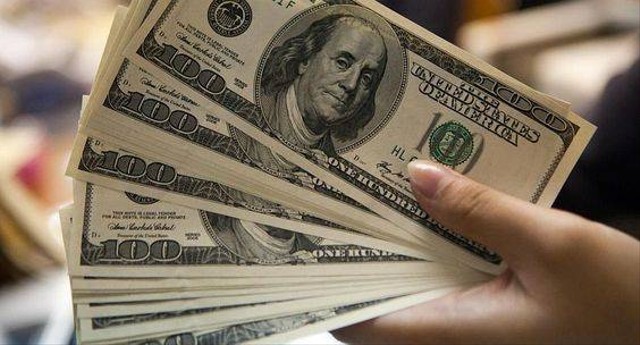Tentang KamiPedoman Media SiberKetentuan & Kebijakan PrivasiPanduan KomunitasPeringkat PenulisCara Menulis di kumparanInformasi Kerja SamaBantuanIklanKarir
2025 © PT Dynamo Media Network
Version 1.103.0
Konten dari Pengguna
Layman's Term in Sightseeing the Global Financial Market Mess: The Feds
20 Maret 2023 12:53 WIB
·
waktu baca 5 menitTulisan dari JS Aldi tidak mewakili pandangan dari redaksi kumparan

ADVERTISEMENT
I lost two racks from the stocks in just one morning last week. Fervently curious, I was looking to see “what on Earth is actually causing these messes in the financial market these days?” I decided to trace back to the phase of the early Covid-19 pandemic seeking to find out where these all have begun.
ADVERTISEMENT
Back in early 2020, the crisis urged people to survive by staying at home with their only sober money and it had no been anymore a popular priority to capital-gain their money. People withdrew their money back into their savings reserves and then saw the capital market crash. It is also fair to say that consumptions and expenses were depressed.
At the far sight of the cape, the monetary authority has had to take responsive action to prevent the economy from dying—if it is not dead. And that means leveraging household consumptions by taking out into public Covid-19 relief policies. Some of it needs to be highlighted are government expenditures and alterations in rates of interest.
ADVERTISEMENT
The Fed's Leverage
The government represented by the central bank had to ‘print’ more money so that the public have more power to purchase primary needs in the hope of getting supply and demand back into its equilibrium. In the span of 2020-mid 2021, the Federal Reserve of the United States injected fresh money worth $5.2 trillion, which equals to be 27% increase in the money supply. That is a huge amount compared to normal circumstances where the increase happens at only 7% a year.
In the same span, the Fed also printed out $4.2 trillion on the frame of Quantitative Easing (QE). The QE, quoting Dr Chris Martenson an economic author and researcher, means that the central bank buys financial assets—in form of U.S. Treasury and bonds—from commercial banks and other private institutions to create a certain amount of money that is later injected towards the public. When the central bank buys bonds, the price of the bonds increases by itself and making long-term interest rates lower.
ADVERTISEMENT
Inflation: Time to Go Back to the Safe House
Everything was working out until the whole of 2022 when the U.S. inflation measured by the Consumer Price Index (CPI) racked at 6.5%. The U.S. Bureau of Labor Statistics said it is the highest rate in the twenty-first century.
Supply and Demand Imbalances
The first main factor that causes high inflation is the imbalance of supply and demand. When people have more money to buy something they want, the store does not have enough stock they refer the problem to the suppliers, saying “they need more time to produce the goods, thus, the shipments come off the schedule.” It implies scarcity of goods and services, but it is quite probably more than that: the whole ecosystem of the industry was not ready to awaken in time and catch up with the reopening trend of the market.
ADVERTISEMENT
Energy Scarcity
The second factor is energy scarcity and the surge in its price. Russia’s military operation in Ukraine makes the energy supply stumbled more. The West embargoed Kremlin for its military operation so that Russia cannot export gas and oil. The hampered supply chain of energy disturbs the functioning economy of many countries, and the U.S., of course. Not only upsurges the price of final goods but also slows down the growth pace of industries.
Higher inflations have urged the Fed to increase its interest rates. On record, the Fed has done that seven times in 2022 to make it at 4.25-4.5% per December 2022, highest in the last 15 years. High interest will set you more cost to borrow money but give you more return in savings.
ADVERTISEMENT
The increasing rates happened to be a way to stimulate capital holders to take home their assets from overseas back to the U.S. market. As well as pursuing domestic holders to move their assets out of the U.S. stock exchange.
It does not mean that regular savings will give holders more return than the stock market has projected in a year. Rather, the increasing rates tell you to keep your money in low to intermediate-risk financial markets. It will make the quantity of circulated money shrunken then turn back the price of goods and services into a more affordable price.
Is the Fed Act Up Pragmatically?
The Covid-19 relief and QE budgets have been sparking the hopes for profitability where financial products are offered in a fine price with a good return. The fresh money from the Fed had circulated up the market to be more vibrant, not only in the U.S., but as well in every region of the globe.
ADVERTISEMENT
The silently aggressive act from the Fed by increasing interests indicates a turn-around of the financial markets in only a span of upcoming three years. Higher interests affected the price of the U.S. Treasury and bonds in a lower price as well as the yields. The recent bankcruptcy of Silicon Valley Bank has opened the eyes to observe deeper and start questioning, “would there be more SVB in the upcoming 2023-2024?”

